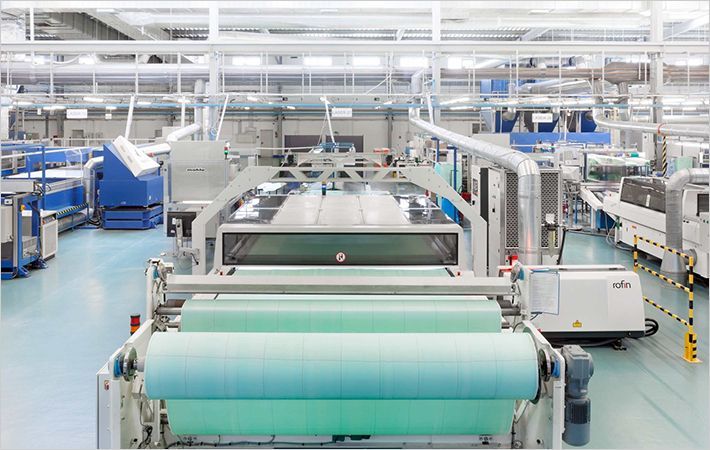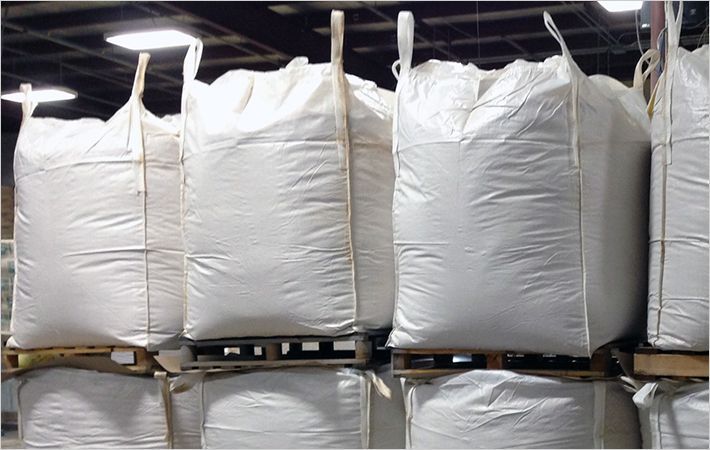The architectural centerpiece inside the Texas A&M University Health Science Center is a dramatic spiral staircase made possible by the artistic collaboration of two highly divergent material systems. One of the materials is the steel bar-reinforced concrete that forms the stairway's sweeping treads and connecting platform landings. The other material is the fiber-reinforced polymer (FRP) composite that MFG Construction Products (MFG-CP) made into forms that gave the concrete its structure and aesthetics.
MFG-CP's experience as a premier manufacturer of FRP forms for architectural concrete was useful in meeting the engineering and design challenges of the project. The architectural design required three forms, one for each floor. At the job site, concrete was poured into the forms which remained in place until the concrete cured.The architectural centerpiece inside the Texas A&M University Health Science Center is a dramatic spiral staircase made possible by the artistic collaboration of two highly divergent material #
A design feature was engineered into the form so that the top riser could accommodate an overlaid marble cover that matched the surface of the floor at the top. In addition, MFG-CP engineered a solution on site that allowed one form to be modified so it could form the staircase around an already-installed large column.
The architectural firm was GS&C Group, and structural engineering was handled by Structure + Haynes Whaley. Both are headquartered in Austin, TX.
How the forms were made
Before the composite forms could be made, MFG-CP used engineering drawings to create pre-construction replicas of finished stairway sections out of wood and masonite. The replicas served as precise dimensional models for building the FRP forms that would give the poured concrete its final shape.
To keep the FRP forms from adhering when removed from the model, the surface of the model is coated with a special wax. Workers then apply the first layer of the form itself – a sandable gel coat that will create the finished surface of the concrete. Next comes the critical structural laminate that keeps the form rigid for shipping, on-site handling, and the pour and cure cycles. The laminate is formed by lay-up of resin-impregnated glass fiber mat and woven roving.
To achieve the required rigidity, select areas of the laminate are internally cored with balsa wood and externally braced with hardwood pieces. The coring and braces are encapsulated into the laminate to result in a monolithic unit when the resin reactively cures into a crosslinked solid.
The resin MFG-CP used to mold the forms was Altek® H864, a low-shrink unsaturated polyester from AOC. MFG-CP Sales Manager Jim Williams pointed out characteristics of the resin that contributed to the laminate's strength and physical integrity. “This is a very good all around resin that wets the glass fibers well and rolls out easily,” Williams said. “And by showing very little entrapment of air, Altek H864 also ensures a more solid laminate construction.”
About MFG Construction Products
MFG Construction Products Company (MFG-CP), Independence, Kansas, USA, has more than four decades of experience and expertise in the technology, engineering and manufacture of FRP composite forms for concrete. The company offers a complete range of forms for columns, domes, pans, floors and custom architectural shapes.
About AOC
AOC is a leading global supplier of resins, gel coats, colorants and synergistic systems for composites and cast polymers. AOC knows technology, lives quality and delivers service better than any other supplier.
AOC Resins

